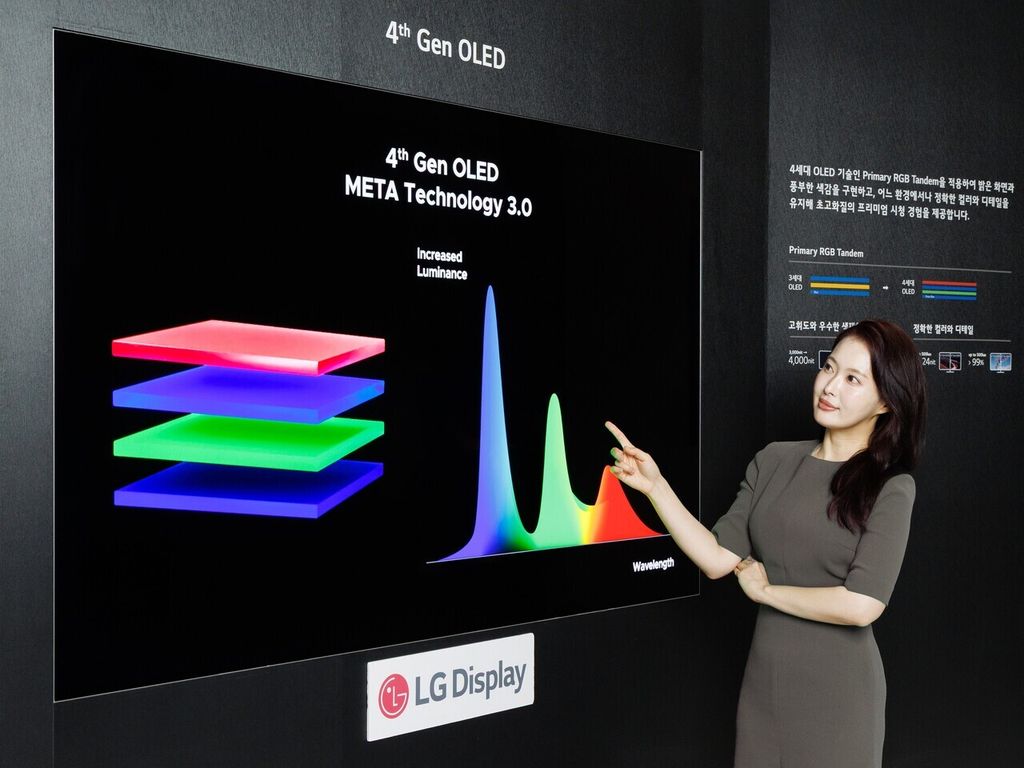- Matching (Score)
- Our verdict
- Competing TVs
- TV appearance
- Where to buy
- Contrast and black detail
- HDR effect quality
- Factory color reproduction
- Color reproduction after calibration
- Smoothness of tonal transitions
- Image scaling and smoothness of tonal transitions
- Blur and motion smoothness
- Console compatibility and gaming features
- Input lag
- Compatibility with PC
- Viewing angles
- Daytime performance
- TV features
- Apps
- Playing files from USB
- Sound
- Panel details
SAMSUNG S95F (TANDEM OLED 83") Review
S95F / FAT / FAE
Available screen sizes:
Diagonal with a different matrix: , ,

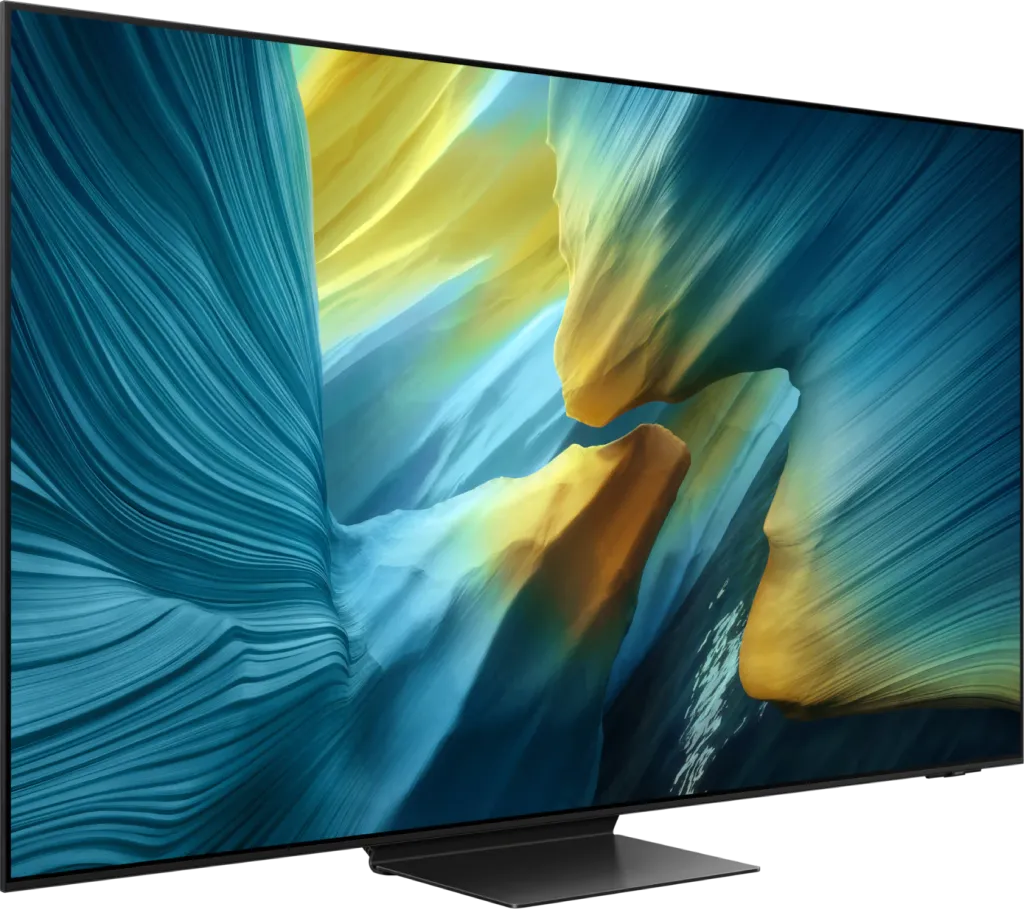
Complete the survey to find out the result
Panel type: WRGB OLED Refresh rate: 165Hz Brand: SAMSUNG Resolution: 3840x2160 System: Tizen Model year: 2025
The largest in the family – Samsung S95F in the 83" version – is also the top OLED for 2025, but with a different technological approach. The manufacturer has opted for a Tandem OLED (WRGB) panel here, which aims to provide similar image quality for smaller versions but at such a large diagonal. Like the smaller models, the television is equipped with a matte finish and an impressive refresh rate of 165 Hz. This is a proposal for those who want a huge screen and high-end image quality. How does it compare to the smaller models? In what ways is it worse and in what ways is it better? You will find out in this test.
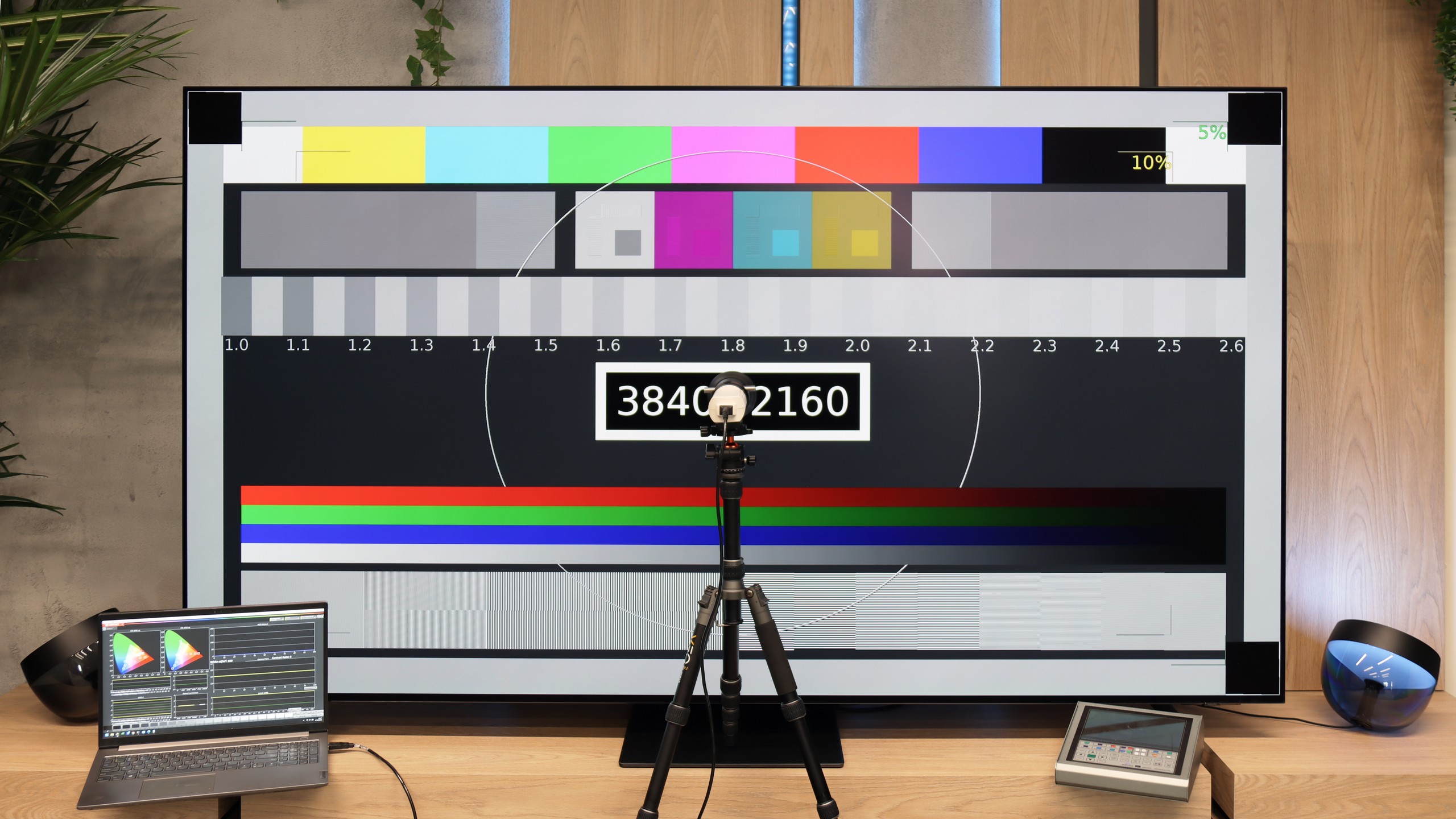
SAMSUNG S95F - Our verdict
8.7
Overall rating
In the case of the 83-inch version, Samsung took a different route than with the smaller sizes and opted for the Tandem WOLED panel produced by LG Display. This move initially raised questions, but in practice, it turned out to be a home run. Here we have an exceptionally successful mix: absolutely reference black levels, outstanding brightness that allows enjoyment of HDR content even during the day, as well as overall picture quality that firmly places this television among the very best on the market. There are also advantages aimed at gamers – lightning-fast input lag, 165 Hz refresh rate, full support for VRR and G-Sync/Freesync, and four HDMI 2.1 ports that let you connect several consoles or PCs without any compromises. To the list of positives, we must also add the matte coating – rarely found in OLEDs, and in this case, exceptionally effective. Thanks to it, light reflections are largely eliminated, and the television remains readable and comfortable to view even in a sunlit living room. This feature becomes even more significant in such a large size, as it is hard to imagine an 83-inch screen on which instead of a movie we see a reflection of our own room. Of course, there were some compromises – the viewing angles on the WOLED panel are not as perfect as in QD-OLED versions. However, in return, we get better performance in challenging lighting conditions and a more stable image under strong light hitting the screen. In practice, it is hard to consider this a real downside, rather as a different distribution of emphasis compared to smaller variants. The S95F in the 83-inch version is an almost explosive mix: a gigantic OLED with a matte finish, excellent brightness, fantastic black levels, and a comprehensive suite of features for gamers. If someone dreams of a huge, matte screen that isn’t afraid of daylight, they will not find a better screen on the market at this moment.
Advantages
Perfect black and excellent contrast
High image brightness
Amazing image quality after calibration
Ultra-fast WOLED 165 Hz panel
Great choice for gamers – full support for HDMI 2.1, VRR, ALLM, and HGiG, with an input lag of just 5 ms
Very accurate colour reproduction after calibration
Best reflection suppression thanks to the matte screen finish and better performance of the panel in challenging lighting conditions compared to the version with a QD-OLED panel
Intuitive and speedy Tizen operating system with a rich set of features
Modern and elegant design
One Connect module for easy aesthetic cable management
Disadvantages
No support for DTS:X (home cinema)
No USB recording from built-in tuners
Worse viewing angles (although still very good) than in the version with QD-OLED panel
Movies and series in UHD quality
9.0
Classic TV, YouTube
9.0
Sports broadcasts (TV and apps)
8.6
Gaming on console
9.8
TV as a computer monitor
8.8
Watching in bright light
7.7
Utility functions
7.9
Apps
8.7
Sound quality
8.0
Complete the survey to find out what fits your preferences
SAMSUNG S95F - Competing TVs in this price range
SAMSUNG S95F - TV appearance
HDMI inputs: 0 x HDMI 2.0, 4 x HDMI 2.1 (40Gbps) Outputs: Toslink (Optical audio), eARC (HDMI), ARC (HDMI) Network Interfaces: Wi-Fi 2.4GHz, Wi-Fi 5GHz, Ethernet (LAN) 100Mbps
Build quality: Super Premium
Stand type: Central
Bezel color: Graphite
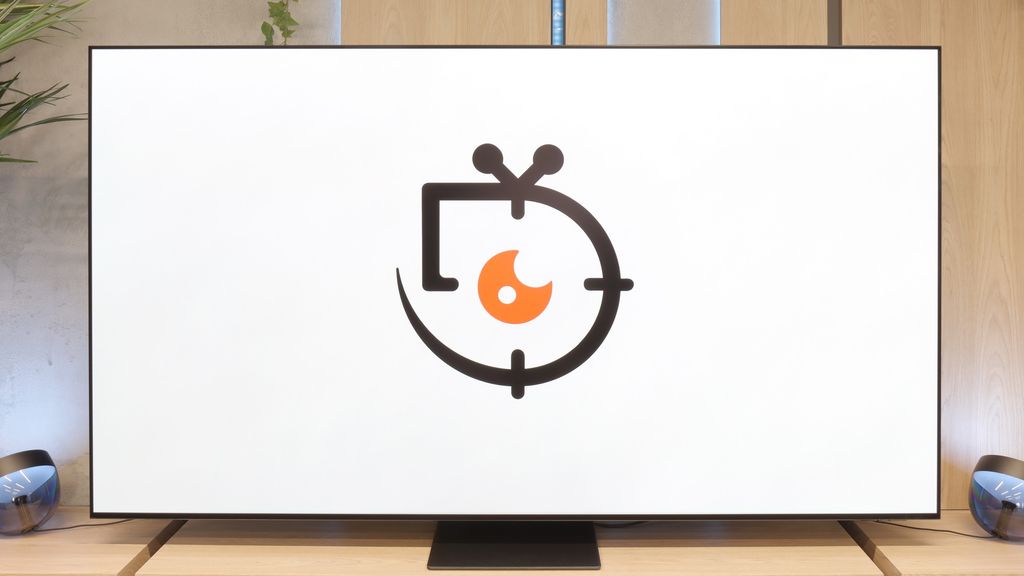
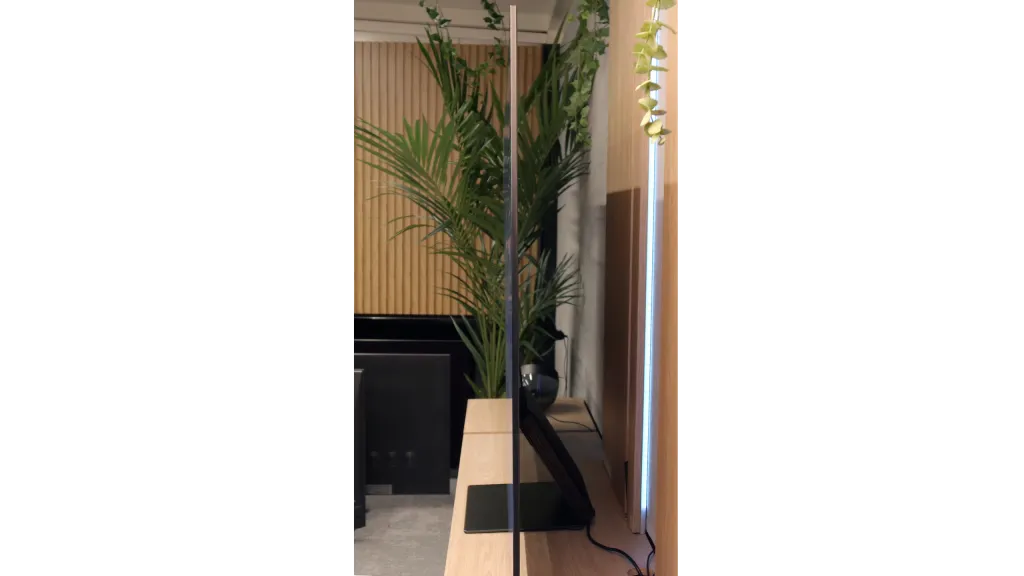
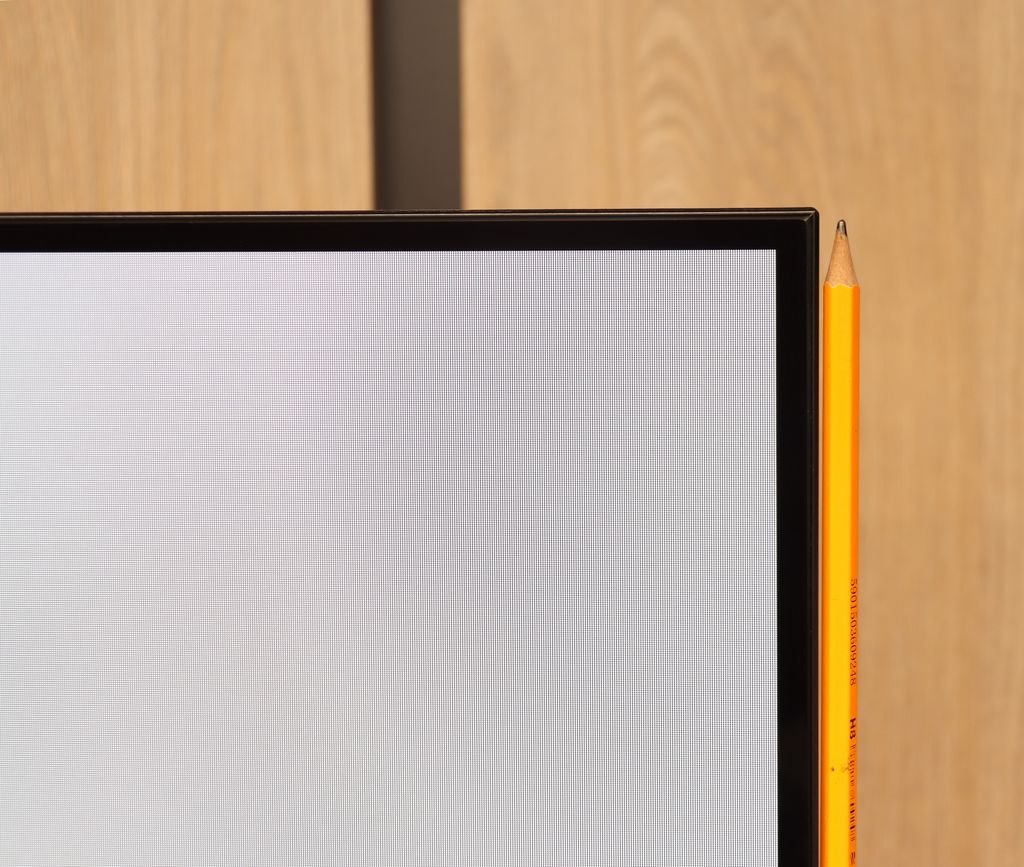
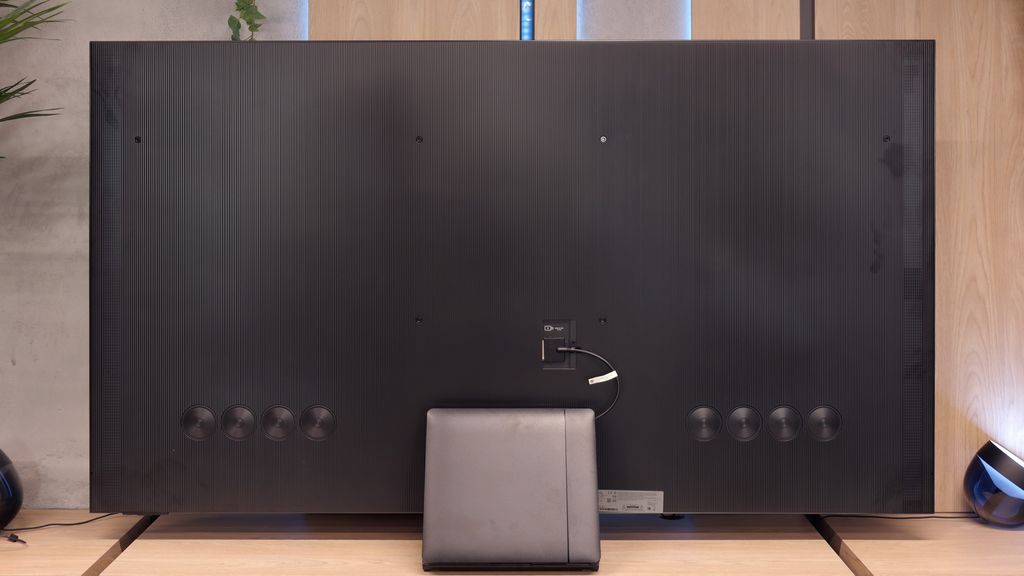
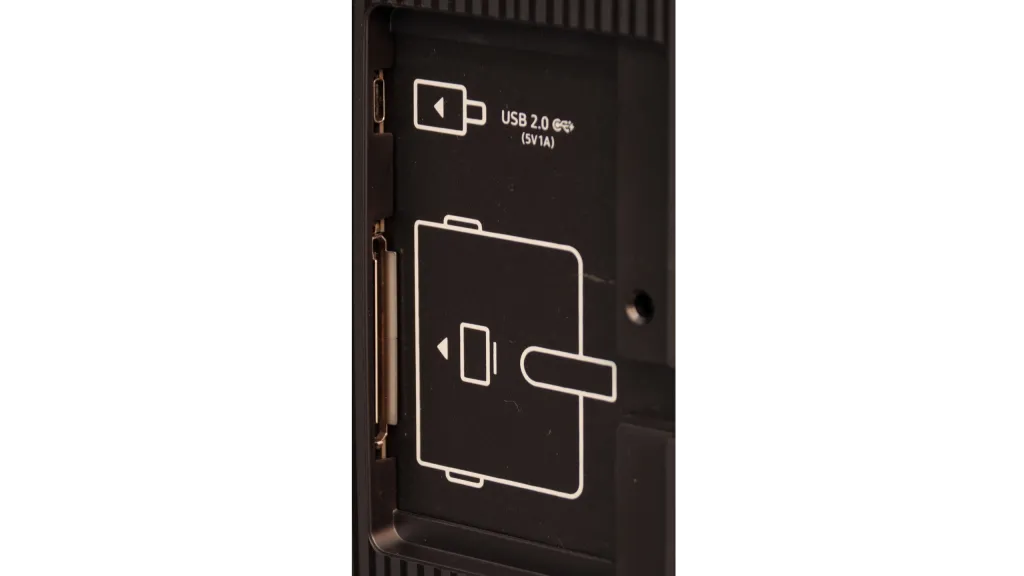
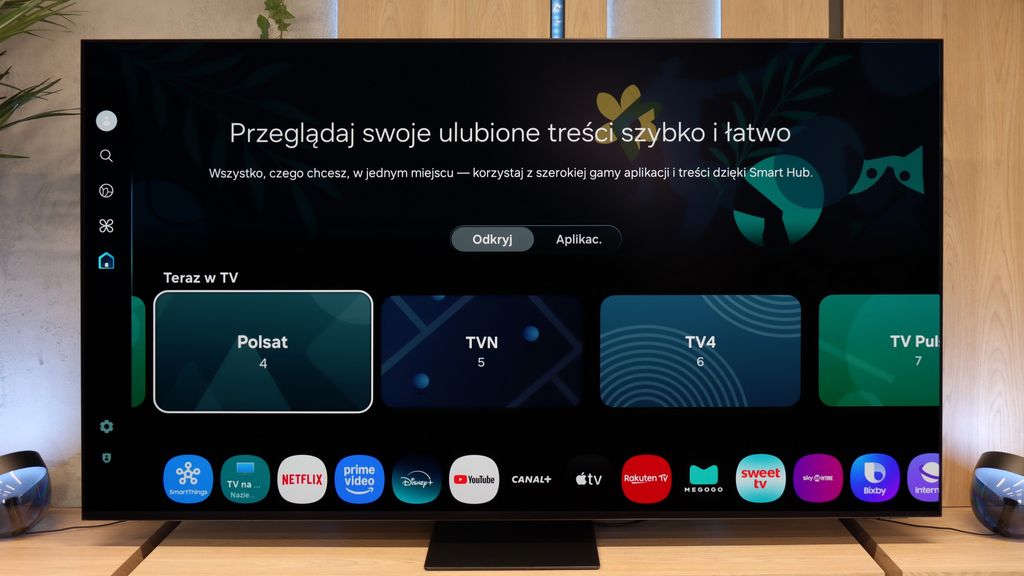

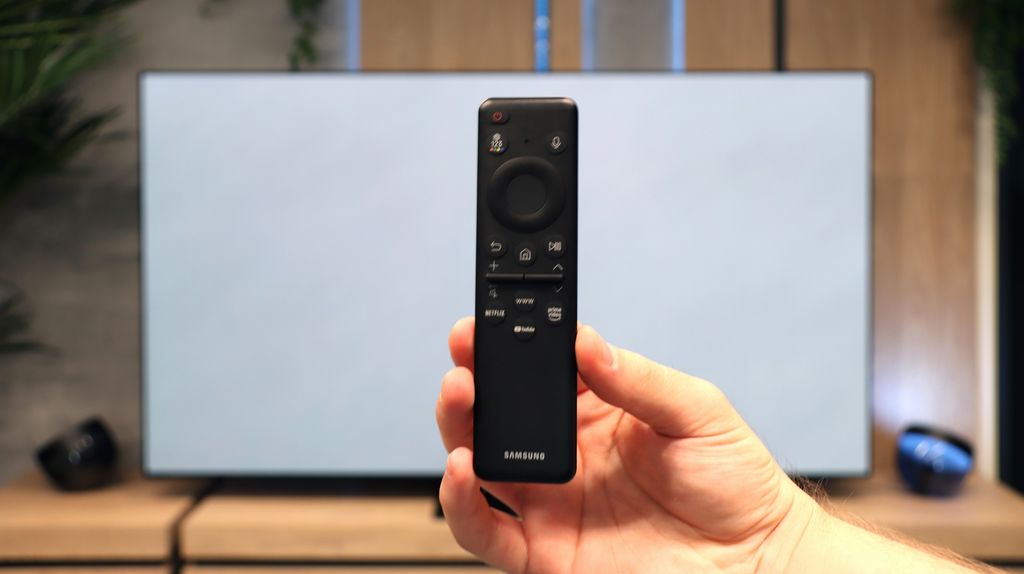
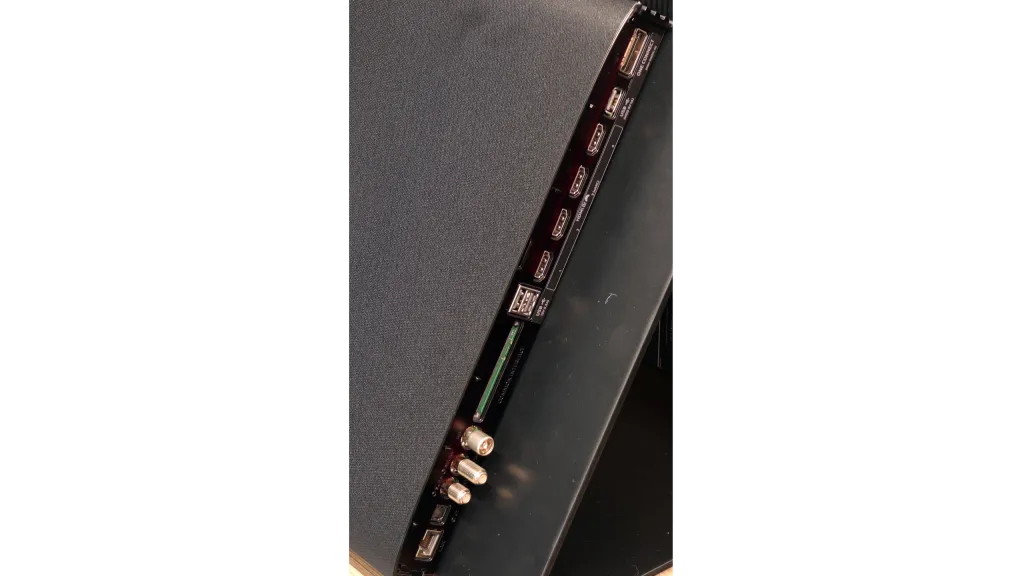
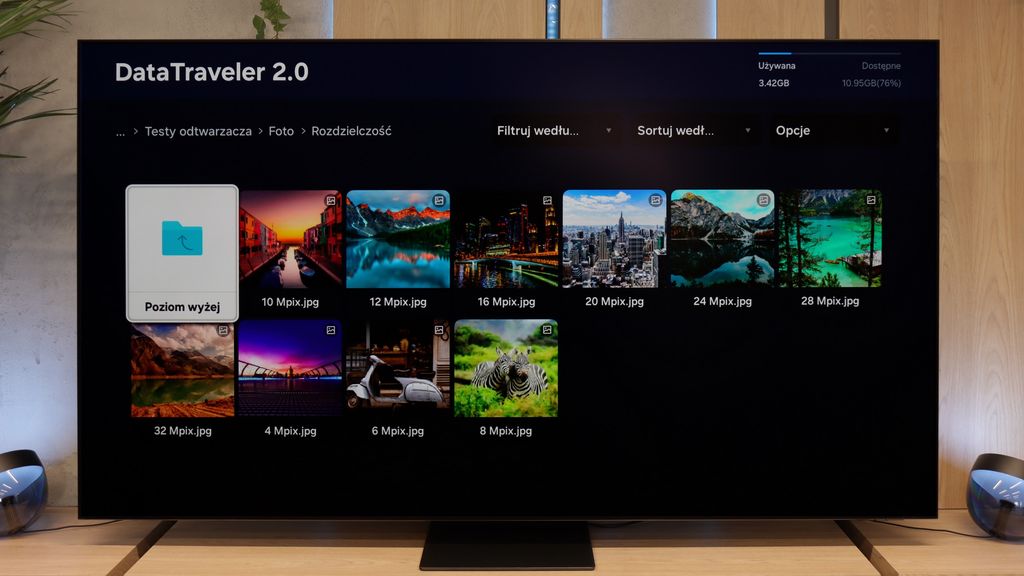
Stand: Fixed
Flat design: Yes
Accessories: Stand, One Connect Box
The Samsung S95F in the 83" version gives the impression of a premium-class television at first glance. The enormous screen makes a stunning impact, and despite its size, the overall design retains the characteristic slimness of this series. The thickness of the panel is just about 1 cm – when viewed from the side, it looks almost like a large-format tablet mounted on the wall. This effect has been achieved thanks to the One Connect module, to which all the ports and electronics have been relocated. The screen remains ultra-thin, and we can mount it flat against the wall – of course, using Samsung's dedicated bracket or a VESA-compatible mount that needs to be purchased separately.
However, if someone chooses not to hang up this giant (and in our opinion, it would be a shame not to take advantage of its super-slim design 😉), a metal stand is included in the package. It can also serve as a holder for the One Connect box, allowing the ports to be easily accessible in a more traditional setup. This is how Samsung envisions the future of televisions – and frankly, it’s hard to disagree.
Buy at the best price
Select size:
SAMSUNG S95F - Contrast and black detail
10/10

Result
∞:1

Result
∞:1

Result
∞:1

Result
∞:1

Result
∞:1
Visibility of details in the lights:
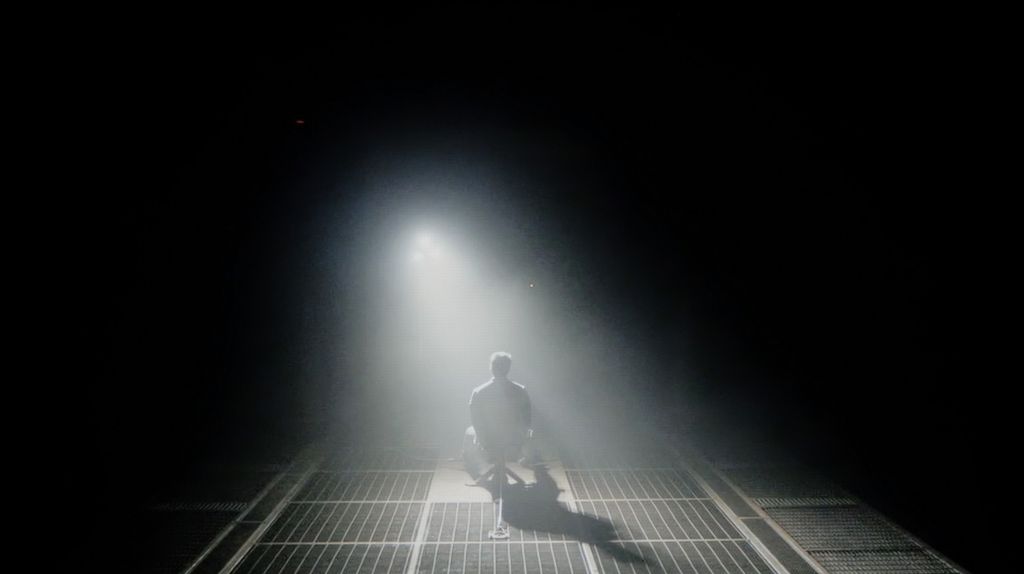
The 83-inch version, equipped with a Tandem OLED panel, also offers a picture that makes a stunning impression. Despite the different technology, the final effect remains at an absolutely top level. The black is deep and uniform, without any transparency or imperfections, and the contrast is truly breathtaking. In dark scenes, every detail remains visible, and the separation of lights is perfect – nothing blends together, and the image looks exactly as it should on a reference-class television. This is proof that regardless of the panel used, Samsung has set the bar very high in this series.
Halo effect and black detail visibility:
SAMSUNG S95F - HDR effect quality
8.6/10
Supported formats: HDR10, HDR10+, HLG Color gamut coverage: DCI P3: 98.3%, Bt.2020: 75.6%
Luminance measurements in HDR:

Result
2074 nit

Result
2107 nit

Result
2330 nit

Result
2165 nit

Result
1083 nit
The Samsung S95F in the 83-inch variant with a Tandem OLED panel also manages to enchant with HDR effects. In test film scenes, such as "Life of Pi" or "Sicario 2", where smaller light points dominate – stars in the night sky, the glow of the moon or headlights – the television effortlessly achieves brightness values exceeding 2000 nits. This is a result that not long ago seemed unattainable for OLEDs and positions this model alongside the best Mini-LED constructions.
The limitations of organic panels only reveal themselves in full-screen scenes filled entirely with white. In the case of this model, for instance in the final scene from the film The Meg, brightness drops to around 1000 nits – a bit lower than in the smaller QD-OLED variants, where the result hovered around 1400 nits. Nevertheless, we are still talking about a remarkable result, unprecedented in OLED televisions of this size. The colour reproduction is equally impressive. The new Tandem OLED panel virtually catches up with QD-OLED televisions, offering excellent coverage of a wide colour gamut. The results are slightly weaker than with QD-OLED, but in practice, they still provide an image whose intensity and naturalness of colours are hard to compare with any other television.
Scene from the movie “Pan” (about 2800 nits)

Scene from the movie “Billy Lynn” (about 1100 nits)

The largest version of the S95F with a Tandem OLED panel performs excellently in practical film tests. Scenes with very high brightness, such as excerpts from the films Pan or Billy Lynn, look stunning – the television can reproduce light intensity in a way that immerses the viewer and creates a sense of experiencing a cinema-class image. There are minor colour deviations, which can be easily corrected through calibration. This shows that Tandem OLED is practically on par with QD-OLED panels in film scenarios, and the technological differences fade into the background in everyday viewing.
HDR luminance chart:
HDR luminance
Luminance of RGB colors
Samsung in the S95F model has ensured a rich support for HDR formats. We have HDR10, HDR10+ and HLG here, so practically any content will be displayed in the appropriate quality. Indeed – there is no Dolby Vision, but in practice, there is no need to worry. The television, thanks to its immense brightness and excellent image adaptation, performs so well that even in demanding scenes, it is hard to notice the lack of this format. The differences between HDR10 and HDR10+ are only noticeable in extreme cases when dynamic metadata helps to extract additional details. On a daily basis, every film or series in HDR looks fantastic here.
Static HDR10

Dynamic: HDR10+

Factory color reproduction
6/10
The best picture mode straight out of the box is undoubtedly Filmmaker Mode. This is a mode that has been available in Samsung televisions for several years and is intended to reproduce the image as faithfully as possible to the creators' vision. In SDR material, it performs reasonably well, although not without faults. The image is slightly subdued, and the white balance tends to shift towards red and blue, resulting in a slight pinkish tint on the screen. The average colour errors hover around a value of ΔE 3–4, which is at the limit of what most people can discern with the naked eye.
Much more pronounced are the limitations when it comes to HDR content. Here, a slight excess of blue in the white balance is not such a big problem – the real obstacle is the way the television manages brightness. In many scenes, the image appeared as if it had been overexposed, and details in the blacks could completely disappear. The final effect did not reflect what the hardware of this class is capable of and led to significant colour errors. It's hard to understand why such a factory characteristic was chosen, as the HDR reception in this version was definitely not what it should have been.
Color reproduction after calibration
9.4/10
After calibration, the S95F shows what it is truly capable of. The white balance has been corrected and minor inaccuracies adjusted, resulting in an almost exemplary image for SDR content. The colour differences have dropped below the level that the human eye can perceive – looking at the screen gives a sense of complete naturalness and colour coherence.
In HDR, the improvement is equally noticeable. The TV performs much better with brightness, eliminating the issue of "blowing out" the entire frame. Bright scenes are more controlled, and blacks retain more detail, although there can still be a slight brightening of the image as a whole. However, this does not change the fact that after calibration, the S95F delivers an image that can comfortably be called one of the best on the market – regardless of whether we are watching movies in SDR or spectacular productions in HDR.


SAMSUNG S95F - Smoothness of tonal transitions
8.6/10
The S95F version with the Tandem OLED panel also handles the fluidity of tonal transitions very well. Although WOLED panels have not typically been the strongest in this category, it is difficult to spot any serious issues here. The gradation of colours is smooth and natural, and the only minor imperfections may appear with brighter colours. However, they are not significant enough to spoil the overall impression of the picture – the whole thing presents itself at a really high level.








Image scaling and smoothness of tonal transitions
7.5/10
Smooth transition function
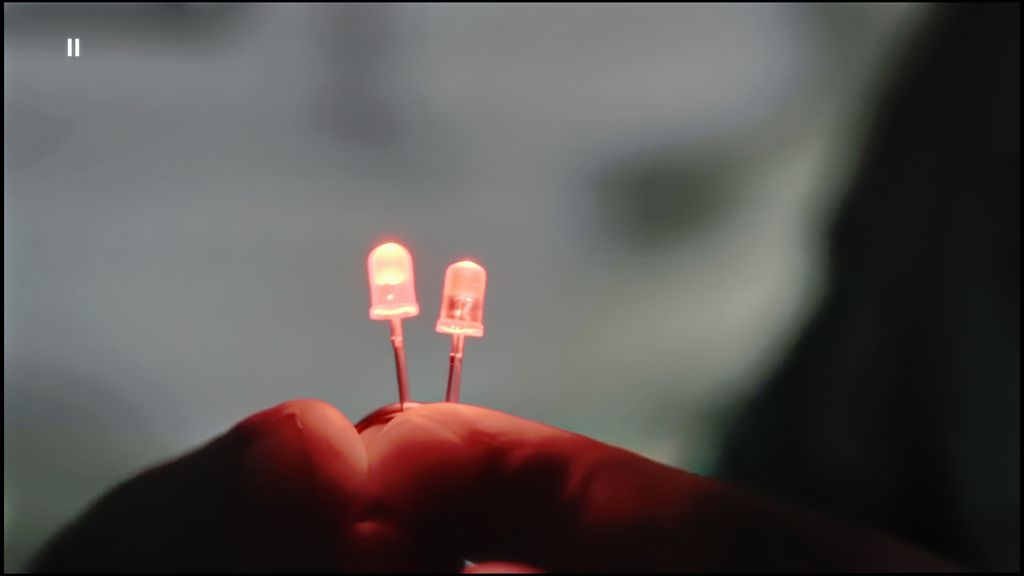
Image without overscan on the SD signal

In the Samsung S95F model, there is a noise reduction feature aimed at improving the smoothness of tonal transitions. Its operation can hardly be called ineffective – on the contrary, it can overly interfere with the image. Older films or materials of poorer quality, such as those from YouTube, acquire a soft, smoothed character thanks to it, reminiscent of a painting effect. The problem is that along with the noise, the natural film grain disappears, stripping the image of its cinematic character. Fortunately, the feature does not blur significant details, so its use is more a matter of taste. If someone prefers a slightly polished and smooth image, it is worth enabling, but in our opinion, the most sensible setting is “Standard”.
A better impression is left by the upscaling. The S95F efficiently enhances the quality of lower resolution content – even 576p video looks quite good, although minor artifacts in the form of blockiness can be noticed. Overall, the effect is very solid, although when compared to competitors – such as the Sony Bravia 8 (II) or LG G5 – it is noticeable that those models can extract a bit more from the image. However, it is worth remembering one inconvenience: with older films and photos, there is an overscan issue that causes a slight cutting off of the left edge of the image.
SAMSUNG S95F - Blur and motion smoothness
8.5/10
Maximum refresh rate of the panel: 165Hz
Film motion smoothing option: Yes
Blur reduction option: Yes
BFI function 60Hz: Yes, 60Hz (image flickers)
Brightness drop with BFI: 52%

In the case of the 83-inch S95F with a Tandem OLED panel, the fluidity of motion also makes a huge impression. The panel, with a native resolution of 4K, offers a refresh rate of 165 Hz, and this combined with organic technology makes games and sports look superb. Additionally, the manufacturer has added a film smoother and a motion blur reduction system, allowing each viewer to adjust the image to their own preferences – whether it's a more "frame-rate" cinematic effect or a smooth, almost theatrical spectacle.
Blur (native resolution, maximum refresh rate):



Blur (BFI function enabled):
Image flickers in this mode



Blur (4K@165Hz):



And what about smearing? Here the matter is simple – it's OLED, so there's no question of any streaks. The reaction of the pixels is instantaneous, and in the test with the popular "little green man," no blurring could be noticed. Zero smears, zero delays, zero problems – and this is precisely the element that makes watching dynamic content on such a large screen a pure pleasure.
SAMSUNG S95F - Console compatibility and gaming features
9.6/10
ALLM: Yes
VRR: Yes
VRR range: 48 - 165Hz
Dolby Vision Game Mode: No
Correct implementation of HGIG: Yes
1080p@120Hz: Yes
1440p@120Hz: Yes
4K@120Hz: Yes
Game bar: Yes
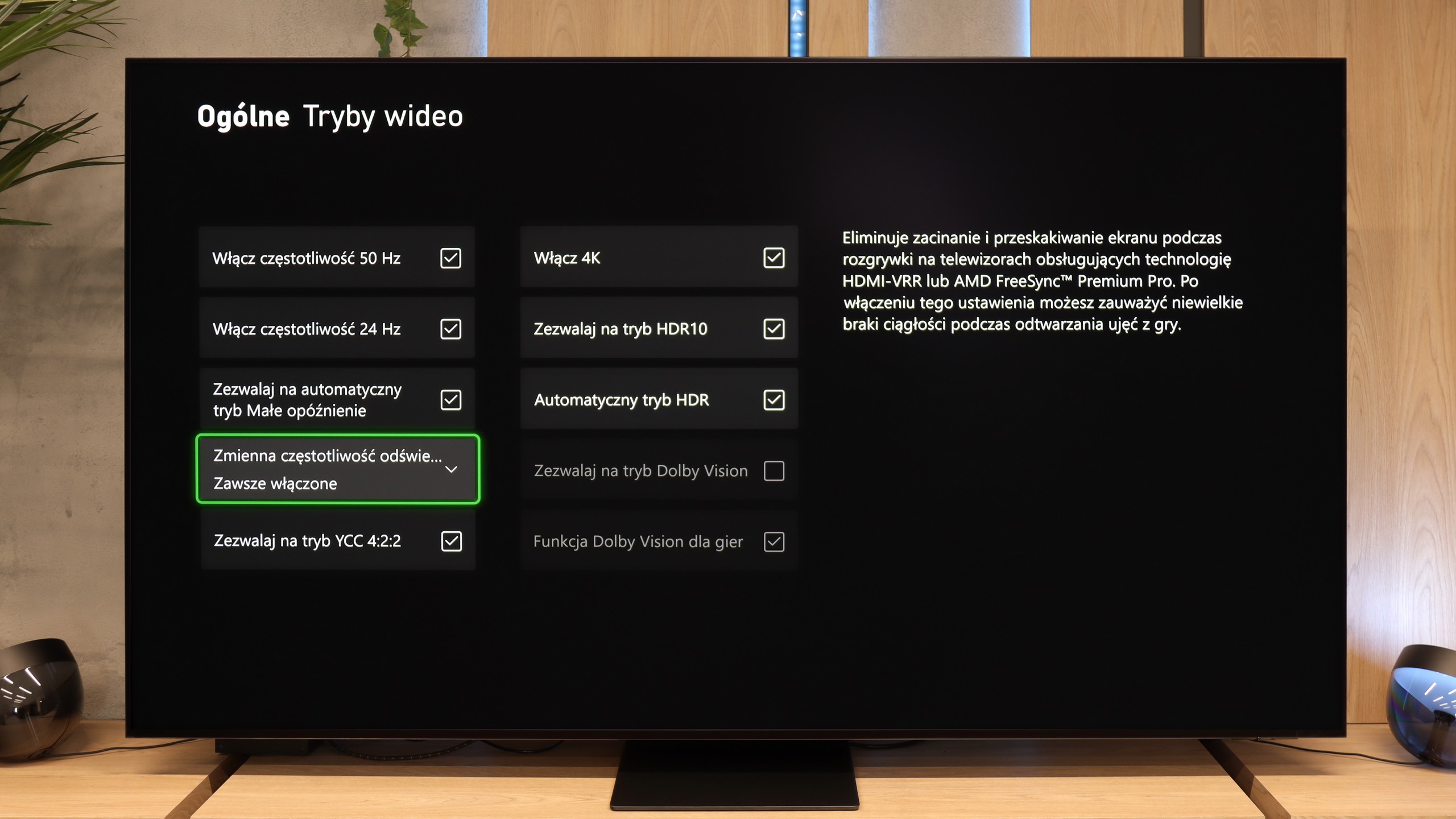
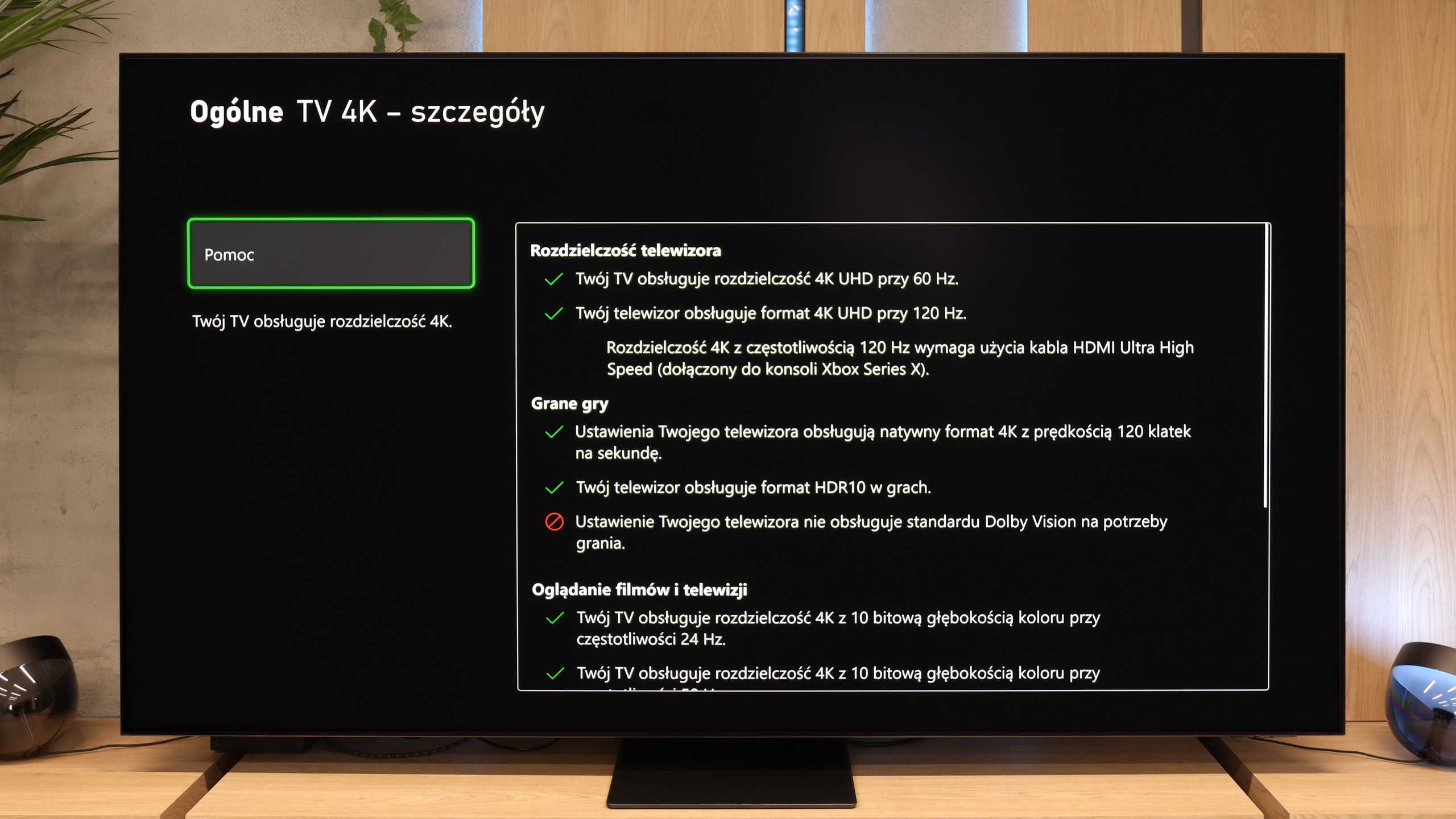
Low smearing and phenomenal motion fluidity, which are the hallmarks of OLED displays, are just the warm-up. The Samsung S95F has been designed with gamers in mind – and this is evident at every turn. Four HDMI 2.1 ports with a bandwidth of 40 Gb/s may sound like a compromise on paper, but in practice, neither consoles nor PCs will experience the slightest limitation here. On board, there is a full set of gaming features: Variable Refresh Rate (VRR), Auto Low Latency Mode (ALLM), as well as a flawlessly implemented HGiG standard that allows you to enjoy HDR exactly as the creators intended. All of this is complemented by Game Bar – an intuitive command centre where you can check and adjust the most important settings in seconds.
Particular attention should also be paid to Game Motion Plus, Samsung's proprietary motion smoothing technology. It can add extra fluidity to animations, which can be a lifesaver in games running at 60 frames per second, where stability doesn't always hold up. Indeed, support for Dolby Vision in games is lacking, but it’s hard to consider this a serious flaw – the manufacturer compensates for this gap with other solutions. The S95F is one of the absolute favourites for the title of the best gaming television on today's market.
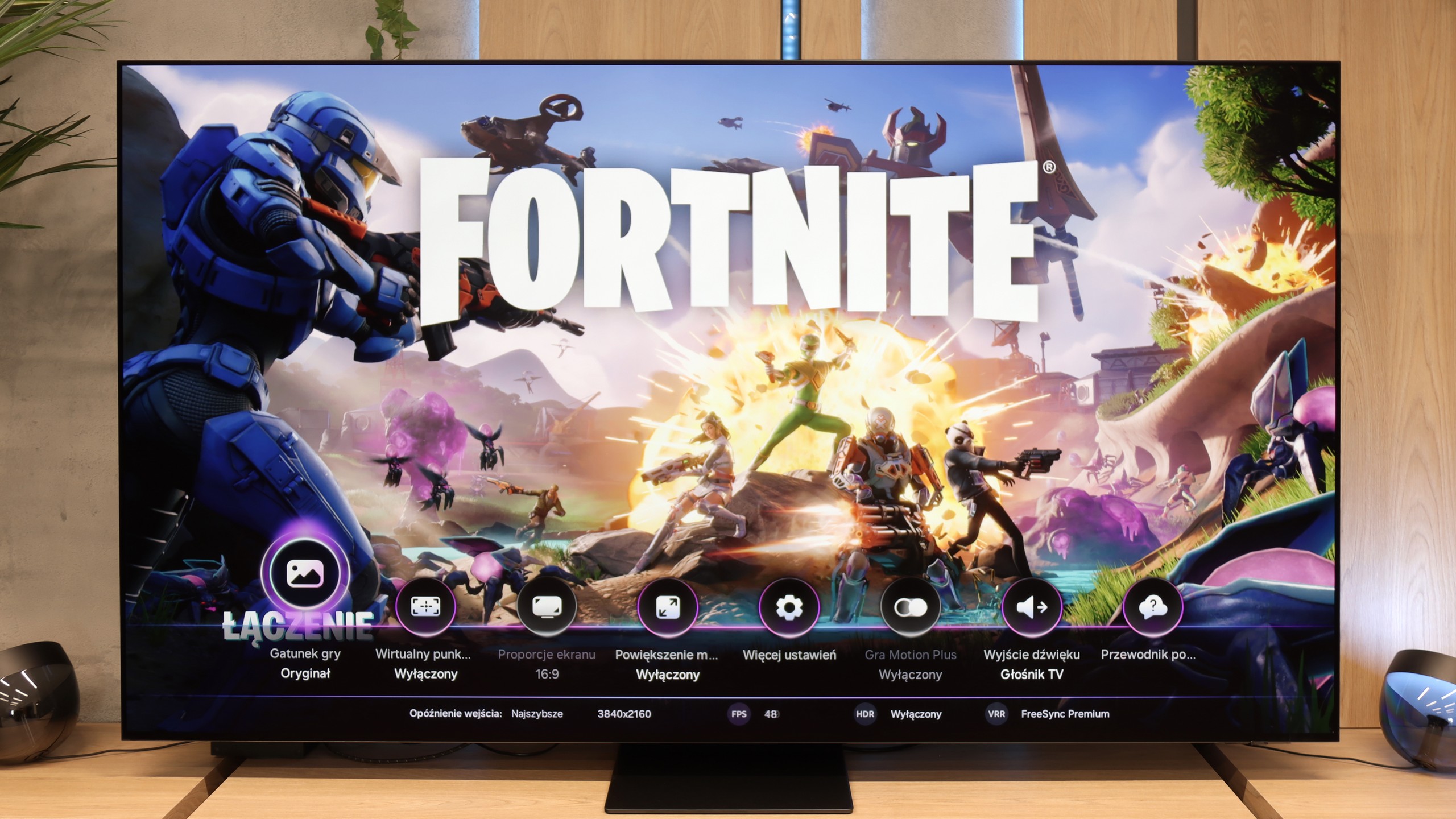
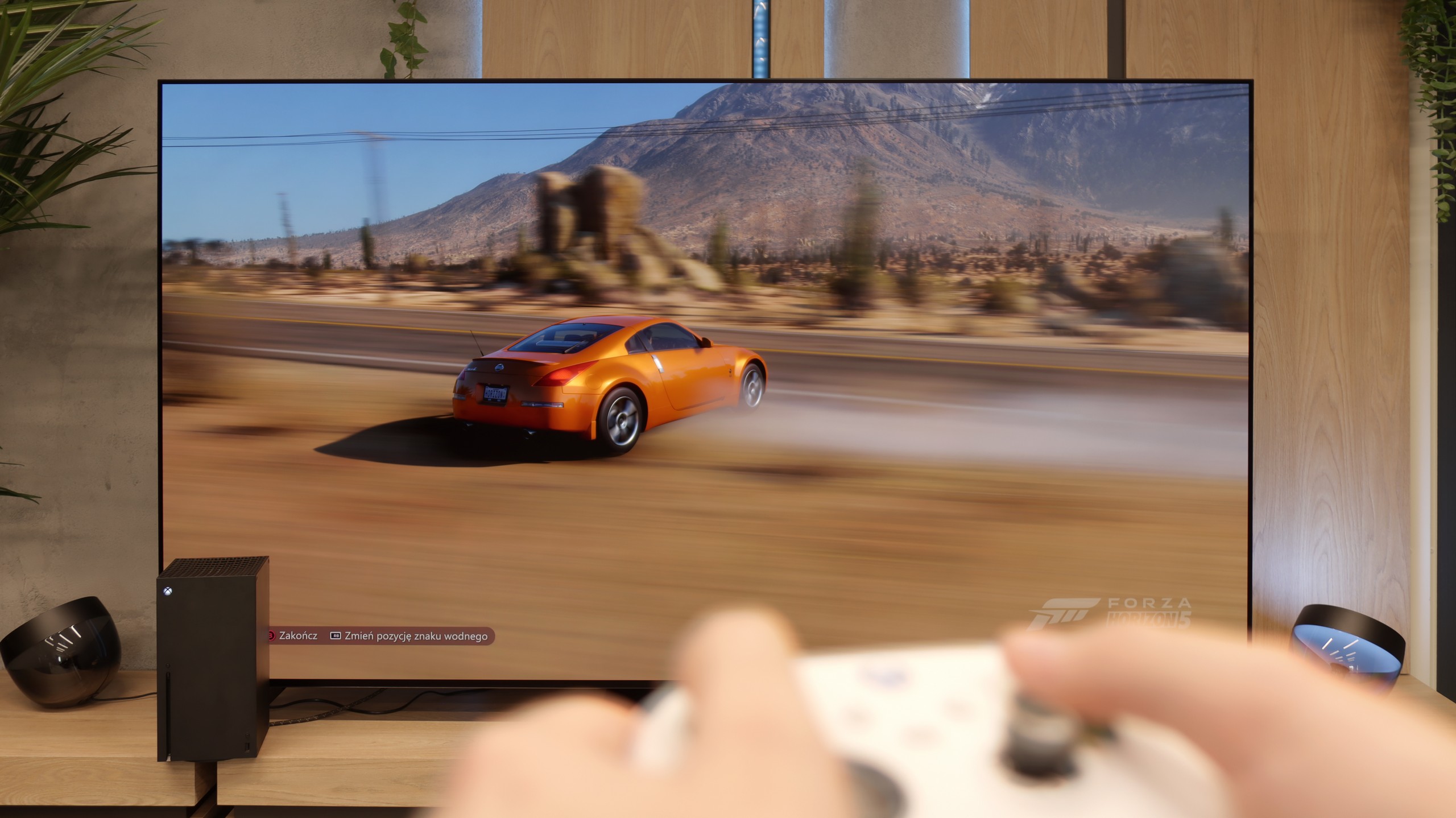

SAMSUNG S95F - Input lag
10/10
The input lag on the Samsung S95F is absolutely top-notch – just 5 ms with 120 Hz content is stunning. The response to our actions on the controller is almost instantaneous, providing a sense of complete control over the gameplay. Of course, with 60 Hz content, the lag is doubled, but even 10 ms is hard to consider a reason for complaints – it’s still a result that will satisfy both demanding gamers and e-sports perfectionists.
| SDR | HDR | Dolby Vision |
|---|---|---|
| 1080p60: 10 ms | 2160p60: 10 ms | |
| 1080p120: 5 ms | 2160p120: 5 ms | |
| 2160p60: 10 ms | ||
| 2160p120: 5 ms |

SAMSUNG S95F - Compatibility with PC
8.8/10
Chroma 444 (maximum resolution and refresh rate): Yes
Font clarity: Good
Readability of dark text and shapes: Very Good
Input lag in PC mode (4K, maximum refresh rate): 5ms
Matrix subpixel arrangement: BWRG
Max refresh rate: 165Hz
G-Sync: Yes
In the version with the WOLED panel, the Samsung S95F also shows its claws – PC gamers have a complete gaming package at their disposal with low input lag, support for G-Sync and FreeSync, and fast refresh rates. This is hardware that can easily replace a monitor even in dynamic titles. When working with text, the differences compared to QD-OLED are subtle yet noticeable – the BWGR subpixel arrangement may give the impression of a slight softening of the edges of letters, as if the text has a delicate shadow. This is not a flaw that ruins the comfort of using a PC, rather a feature arising from the panel's construction.
SAMSUNG S95F - Viewing angles
7.6/10
Brightness drop at an angle of 45 degrees: 34%
In the variant with the WOLED matrix, the viewing angles are good and absolutely adequate for everyday watching. The fact is that the QD-OLED panel performs better in this respect, and with a strong angle, you can notice a slight shift in colours; however, this is not something that disrupts a normal viewing experience. Sitting on the sofa – whether in the middle or slightly to the side – the picture still looks very good, and most viewers will be fully satisfied.
SAMSUNG S95F - Daytime performance
7.7/10
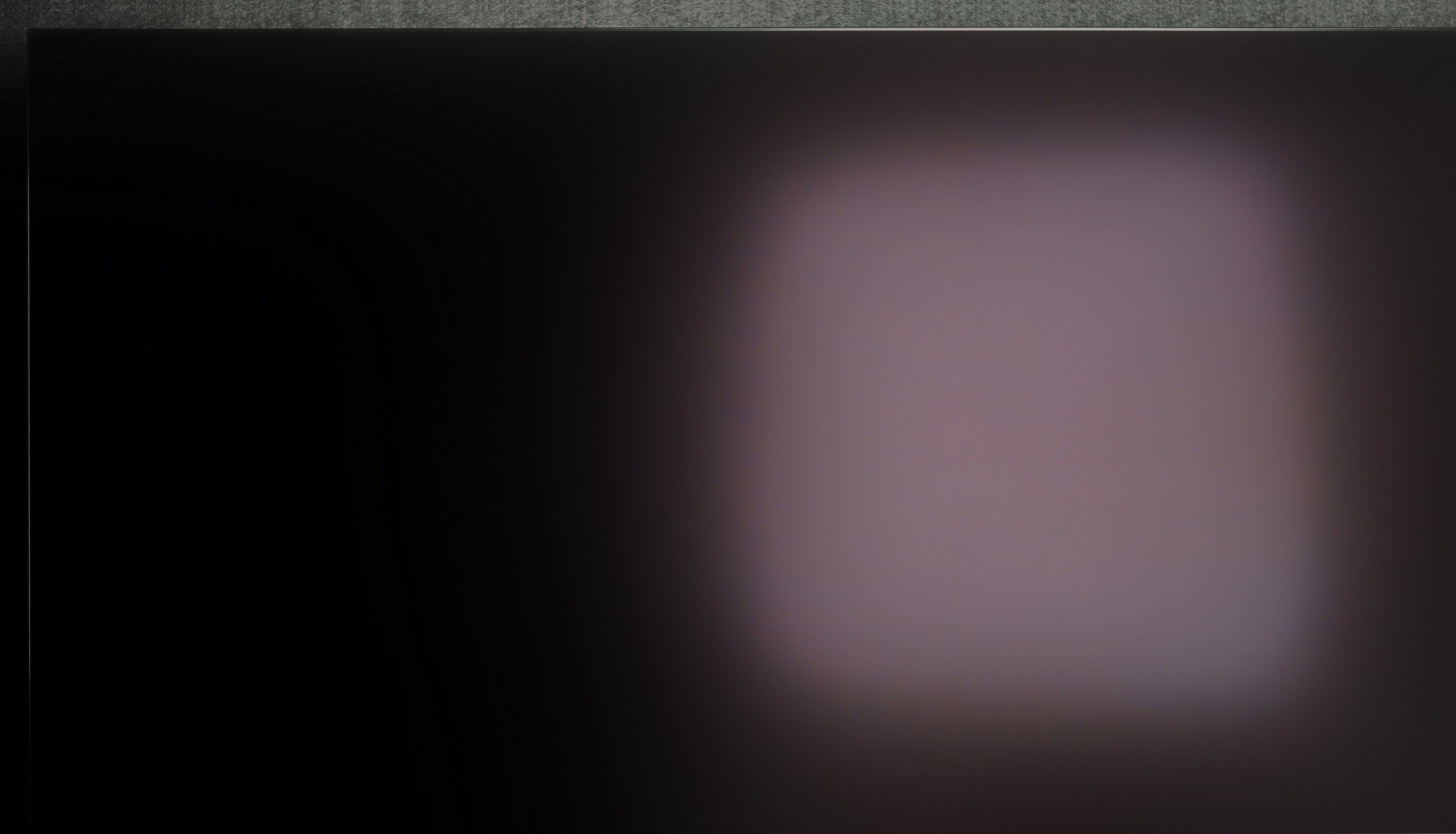

Panel finish: Matte
Reflection suppression: Very Good
Black levels during daytime: Good
This is probably the first television in the world where two worlds have come together – the matte finish from Samsung and the WOLED panel from LG Display. And it's fair to say that such a duo makes a stunning impression. Light reflections virtually disappear, and the image does not lose its naturalness – colours remain saturated, and black does not lighten as it does in QD-OLED. It sounds almost like an industry joke, but it turns out that the combination of technologies from two rivals has produced a result better than anyone could have expected. Moreover, the panel's brightness, hovering around 700 nits, means that the television performs excellently even in difficult daytime conditions.
Panel brightness
Average luminance SDR
SAMSUNG S95F (TANDEM OLED 83"): 704 cd/m2
SAMSUNG S95F - TV features
7.9/10
System: Tizen
System performance: Very good
- HDMI inputs: 0 x HDMI 2.0, 4 x HDMI 2.1 40Gbps
- Outputs: Toslink (Optical audio), eARC (HDMI), ARC (HDMI)
- Network Interfaces: Wi-Fi 2.4GHz, Wi-Fi 5GHz, Ethernet (LAN) 100Mbps
- TV reception: DVB-T, DVB-T2, DVB-S, DVB-S2, DVB-C
Classic features:
Recording to USB (terrestrial TV): No
Recording programming: No
Picture in Picture (PiP): Yes
RF remote control (no need to aim at the screen): RF
Backlit remote control: No
Teletext: Yes
Audio only mode: Yes
Bluetooth headphones support: Yes
Simultaneous Bluetooth headphones & TV audio: Yes
Smart features:
AirPlay: Yes
Screen mirroring (Windows Miracast): Yes
Voice search: Yes
Voice search in native language: Yes
Ability to connect a keyboard and mouse: Yes

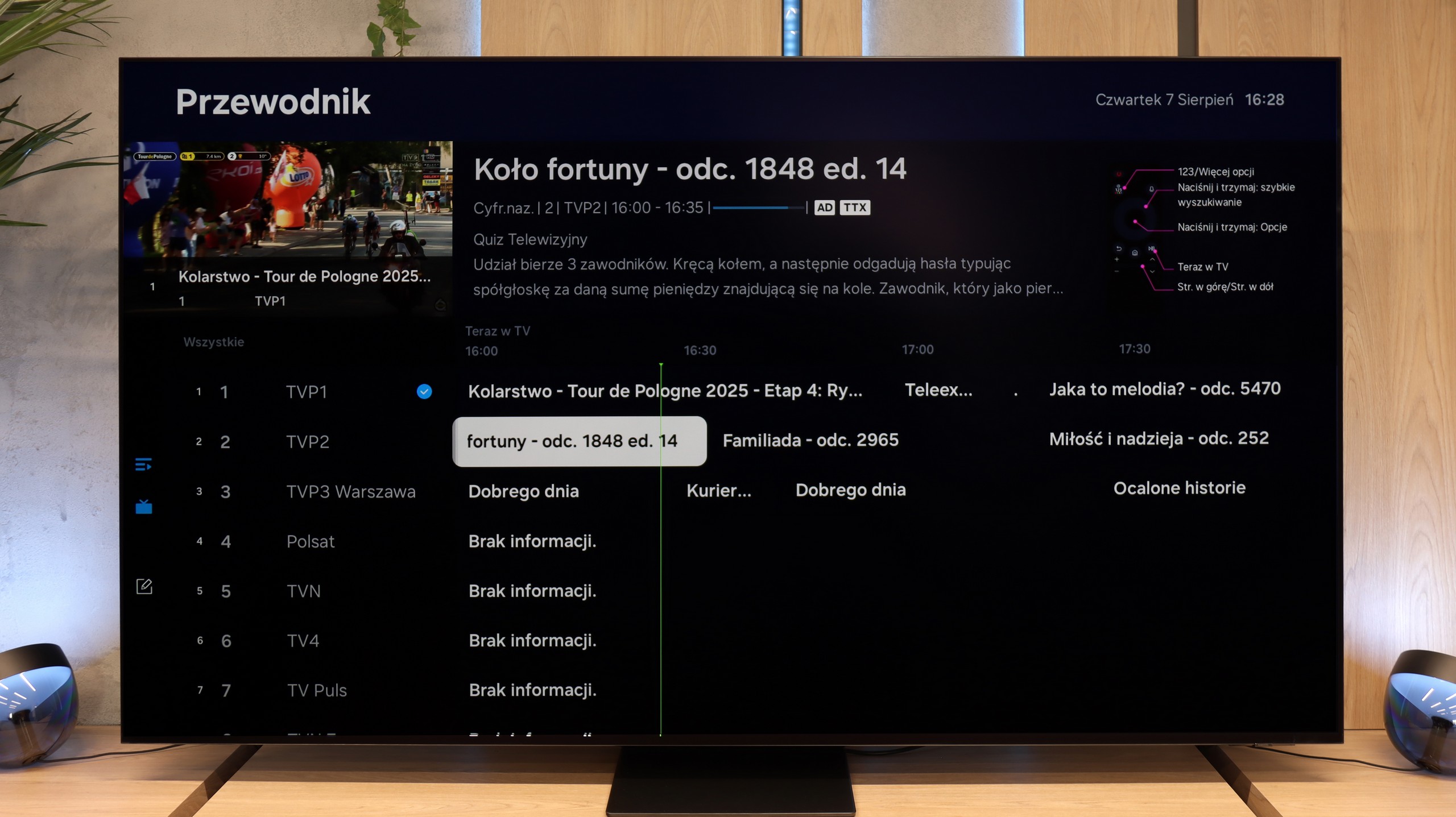






SmartTV in S95F: Tizen
Samsung S95F is not just a screen for films and games, but also a well-developed smart platform. The Tizen system runs quickly and smoothly – it is hard to encounter stutter or major issues here. In everyday use, we have everything we need: AirPlay, screen sharing from smartphones, and voice search (which works even without the remote in hand). It is a closed system, so we won't find every app available on Android, but the library is rich enough that no one is likely to feel deprived. Additionally, there is SmartThings, which integrates with smart home devices, allowing the TV to be more than just a display.
Classic features of the S95F
A pleasant surprise is the presence of features that are often omitted in this class of equipment – PiP, teletext, and the ability to connect headphones via Bluetooth. The only thing missing is USB recording from the built-in DVB-T/T2 tuners, but Samsung makes up for this with an excellent remote (tiny), which can easily control other devices, including the Canal+ decoder. The One Connect module also deserves praise – having all the inputs hidden in a separate box is a huge convenience, especially for those who frequently juggle connected devices. Thus, it is difficult to point out any element that could provoke complaints here.
Sound connection options
HDMI audio:
Other audio outputs:
Toslink: Yes
Wireless audio:
Bluetooth: Yes
Samsung Q-Symphony (Speaker extension): Yes
Supported audio formats (external HDMI eARC audio):
Dolby Digital Plus 7.1: Yes
Dolby True HD 7.1: No
Dolby Atmos in Dolby Digital Plus (JOC): Yes
Dolby Atmos in Dolby True HD: No
DTS:X in DTS-HD MA: No
DTS-HD Master Audio: No
Senior accessibility
Numeric keyboard on TV: No
Font size adjustment: Yes
Audio description: Yes
SAMSUNG S95F - Apps
8.7/10























SAMSUNG S95F - Playing files from USB
9/10

| Maximum photo resolution: | Supported photo formats: |
|---|---|
The built-in media player in the S95F works quite well, although it is not without its limitations. It handles most popular video and audio formats, but there may be some concerns with photos. The manufacturer's claims do not always align with reality – for example, HEIC files would not open. On the other hand, for most users, such a set of features will be perfectly sufficient; however, if someone needed something more advanced, they could always look for an alternative in the Tizen catalogue (if they can find one) or use wireless connectivity 😉.
SAMSUNG S95F - Sound
8/10
82dB
Maximum volume
Supported codecs
(TV speakers)
Dolby Digital Plus 7.1
Dolby True HD 7.1
Dolby Atmos in Dolby Digital Plus (JOC)
Dolby Atmos in Dolby True HD
DTS:X in DTS-HD MA
DTS-HD Master Audio
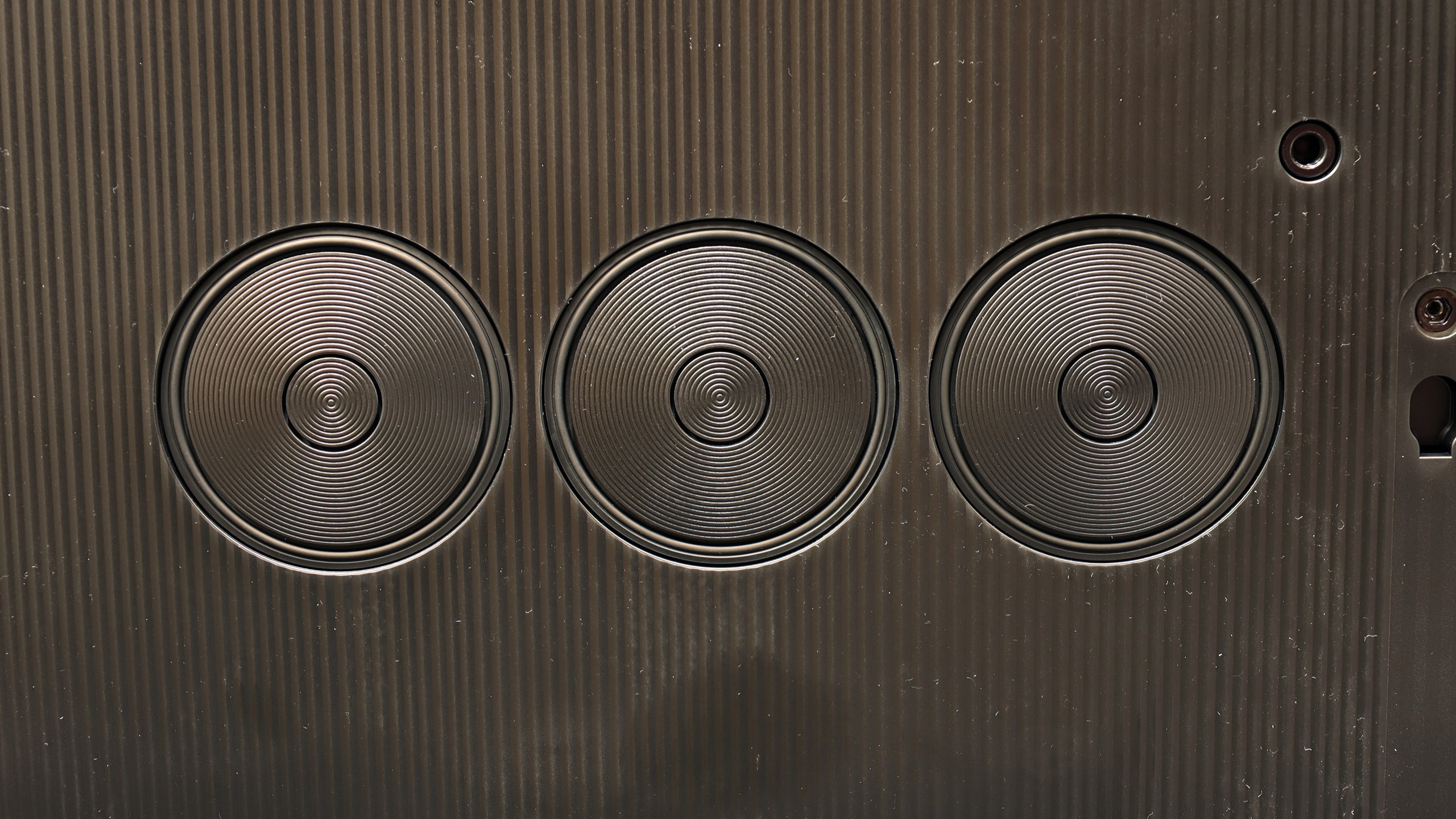
The built-in speakers of the S95F can be pleasantly surprising – they sound enjoyable and clear, and despite the slim construction of the television, it is hard to say that the sound is flat. Admittedly, there could be more bass, but this is a natural compromise with such a thin casing. For everyday watching of films or series, the set performs excellently. Those who enjoy stronger sensations should consider a soundbar – preferably one with Q-Symphony support. Then the television speakers and the Samsung soundbar work together.
Acoustic Measurements
82dBC (Max)
75dBC
SAMSUNG S95F - Panel details
Software version during testing: T-RSMFDEUC-0090-1042.5, E2500007, BT-S
Panel uniformity and thermal imaging:

Founder and originator of the "ChooseTV" portal

Journalist, reviewer, and columnist for the "ChooseTV" portal
See articles related to SAMSUNG S95F (TANDEM OLED 83"):
11/25/2025
4/3/2025






